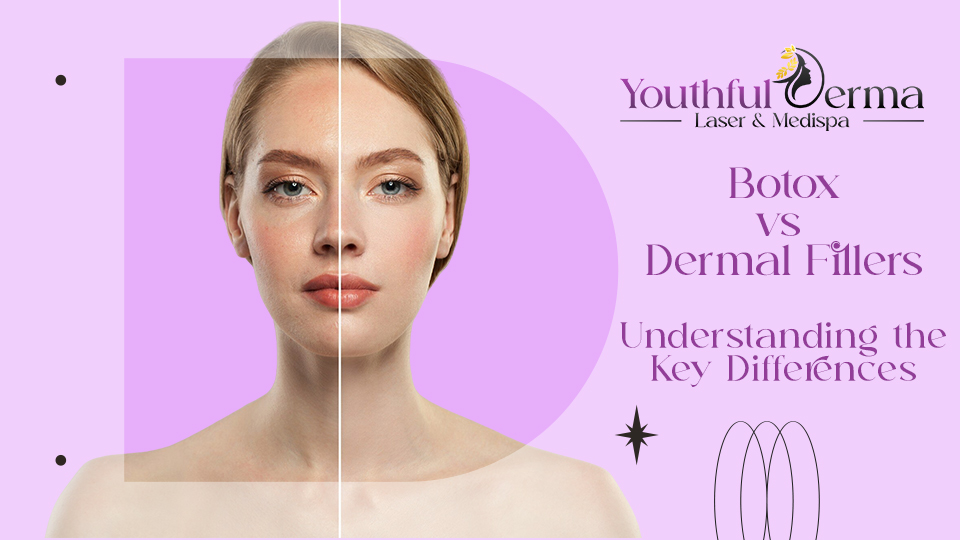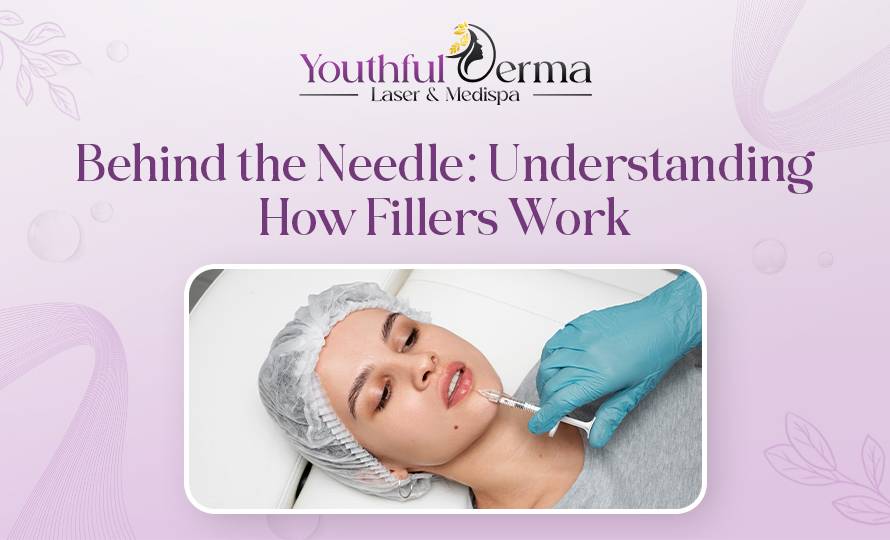Botox vs. Dermal Fillers: Understanding the Key Differences
In the world of aesthetic treatments, Botox and dermal fillers are two of the most popular non-surgical options to address signs of aging. Though both treatments can help rejuvenate your appearance, they are often confused with one another. While they share similarities, Botox and dermal fillers work in different ways and are designed to address distinct concerns.

What is Botox?
Botox is a brand name for botulinum toxin, a substance derived from the Clostridium botulinum bacterium. This toxin temporarily blocks nerve signals, preventing muscles from contracting. By relaxing the facial muscles, Botox smooths out wrinkles and fine lines, particularly those caused by muscle movement.
Common Botox Treatment Areas:
- Forehead Lines: The horizontal lines that appear across your forehead.
- Frown Lines: The vertical lines between your eyebrows.
- Crow’s Feet: The fine lines around the outer corners of your eyes.
Key Differences Between Botox and Dermal Fillers
Dermal fillers are injectable treatments used to restore lost volume, smooth wrinkles, and enhance facial contours. Unlike Botox, which affects muscle movement, dermal fillers focus on adding volume to areas of the face that have experienced sagging or volume loss due to aging..
Common Dermal Filler Treatment Areas:
- Cheeks: Restoring volume to sagging or hollowed-out cheeks.
- Lips: Adding fullness to thin lips and smoothing out fine lines around the mouth.
- Nasolabial Folds: Soothing deep lines running from the nose to the mouth.
- Jawline and Chin: Defining and reshaping the jawline or chin area.
What are Dermal Fillers?
While both Botox and dermal fillers can help improve your appearance, they target different skin concerns and work in distinct ways. Here’s a breakdown of the key differences:
1. Purpose of Treatment
- Botox: Targets dynamic wrinkles caused by muscle movement, such as frown lines, crow’s feet, and forehead lines.
- Dermal Fillers: Restore volume, smooth static wrinkles, and enhance facial contours by filling in areas that have lost volume over time.
2. Treatment Time
- Botox: Quick and simple, usually taking about 10-15 minutes per area treated.
- Dermal Fillers: Slightly longer, with treatment typically taking 20-30 minutes.
Can You Use Botox and Fillers Together?
Yes! Many patients opt for a combination of Botox and dermal fillers to achieve a more complete and natural-looking result. Botox addresses wrinkles caused by muscle movement, while dermal fillers restore volume to areas affected by aging. When used together, they can help you achieve a more youthful, refreshed appearance without surgery.
Which Treatment is Right for You?
Choosing between Botox and dermal fillers depends on your aesthetic goals. If you’re looking to smooth out wrinkles caused by facial expressions and movement, Botox is the way to go. If you’re concerned about volume loss, deep lines, or sagging skin, dermal fillers can help restore fullness and contour..
Conclusion
Botox and dermal fillers are both effective, non-surgical treatments that can help you achieve a more youthful, rejuvenated appearance. Understanding the differences between the two can help you decide which treatment is right for your unique concerns.
47 Lakeshore Rd E, Unit 100 Mississauga ON, L5G 1C9
3281 Aubrey Rd, Mississauga, ON L5L 5C9, Canada




